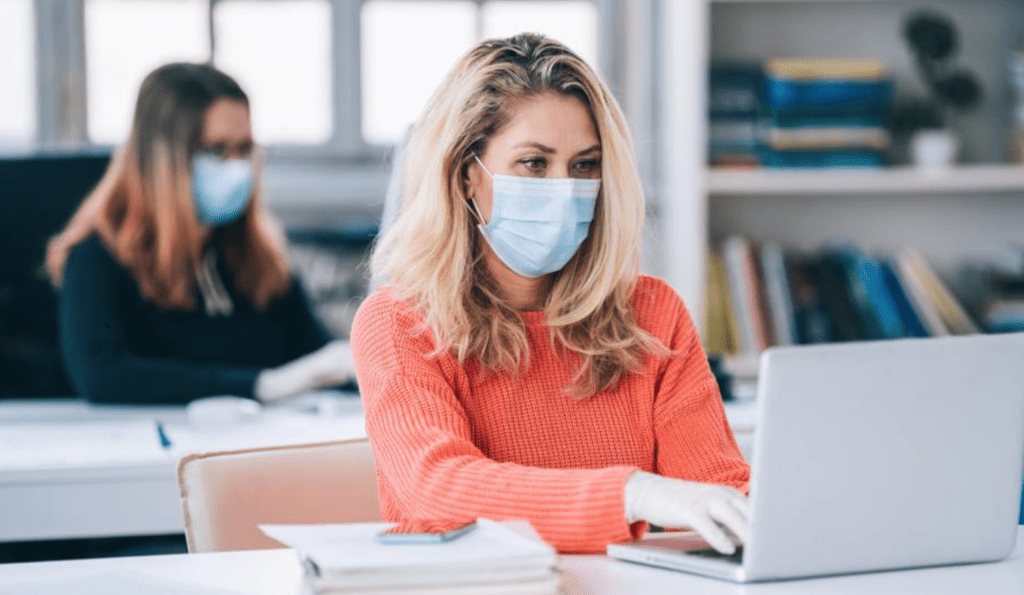Four out of ten are in favour of the use of face masks, according to the Norwegian Corona Monitor from Opinion. Wearing a face mask can help prevent infection from spreading and stop the person from catching any airborne infectious germs. When someone coughs, talks sneezes he or she might release germs into the air, which might infect others nearby. Face masks form part of a strategy for managing infections to prevent cross-contamination. Doctors at the hospital and emergency centre wear face masks to prevent disease transmission.
How should the face mask be worn?
- Clean the hands always with soap and water before touching the face mask.
- Remove the mask from the dispenser or case, and ensure that there are no gaps or tears in the masks.
- Make sure users determine which side is the top of the mask and which is the front of it, so they can wear the mask properly.
- Face masks with ear loops: keep the ear loops around each ear and bring the loops around.
- Face masks with ties: put a mask to their nose and place the ties over their heads to secure a bond.
- Face masks with bands: keep the mask on the nose and pull the top strap over the head’s crown and bring the bottom strap over their head so it’s on the neck’s nape.
- Drag the mask over the mouth and chin.
Different types of face masks munnbind in Norway provide varying levels of security. Surgical grade N95 respirators provide the highest degree of protection against infection with pandemic followed by surgical grade masks. However, these masks do not fit well for long periods and lead to the low supply of deposition waste. These masks are expensive. Therefore, it should also be reserved for health workers or those at especially high risk in countries where the people have traditionally been required to wear face masks. There is less evidence that single-use paper masks or reusable textile covers are protective, however, it still shows that face masks can lead to reduced pandemic transmission. Research into the use of masks, outside of surgical masks, continues to emerge: there appears to be some value, but the exact requirements for masks are still being worked out, to what degree they shield the wearer or those around them.
Only a bandana can be better than none to fit closer around the nose. Clean hands properly with soap and water before they put on the mask. Cover the mask with the mouth and nose, and make sure there are no holes between the face and the mask. Stop touching the mask when using it, and wash your hands if the user does. Should not tap on the forehead and pour it into a closed bin quickly or immediately into the washing machine if the mask is recurring, use the elastic tags to cover the face. The majority of commercially produced masks are made of plastic materials and are for individual applications. The general population’s use of reusable masks would significantly minimize plastic emissions and the impact of any government criteria for wearing face masks on climate change.

